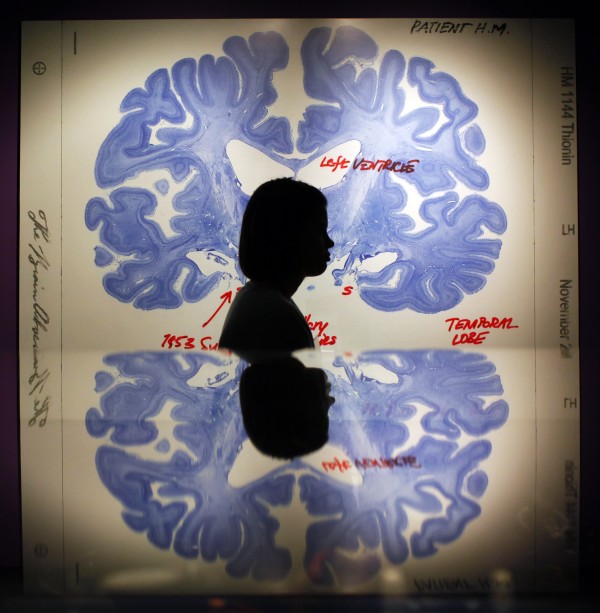Scientists "Rewrite" Bad Memories Into Good Ones
| David Perry | | Aug 27, 2014 10:23 PM EDT |
(Photo : Reuters) A discovery in the brain's wiring revealed how emotions and memories become linked.
A study conducted by a team of medical scientists at MIT revealed the brain's circuitry links positive or negative emotions to a memory.
Moreover, scientists were able to reverse the memory-emotion association.
The findings demonstrated that a circuit of neurons connecting two regions of the brain (the hippocampus and the amygdala) play a critical role in associating emotion to a memory.
Like Us on Facebook
Researchers found they could reverse the emotional association of specific memories by manipulating brain cells with "optogenetics," a technique that uses light to control neuron activity.
The finding could help in the creation of new drugs to help treat conditions such as post-traumatic stress disorder, depression or anxiety, researchers say.
"In the future, one may be able to develop methods that help people to remember positive memories more strongly than negative ones," says author Susumu Tonegawa of the Picower Professor of Biology and Neuroscience and director of the RIKEN-MIT Center for Neural Circuit Genetics at MIT's Picower Institute for Learning and Memory.
With regard to their storage in the brain, memories are extremely complex. Different aspects are stored in different brain regions.
A memory's context, including information such as location, is stored in cells of the hippocampus. Emotions assigned to that memory are found in the amygdala.
The experiment involved male mice being conditioned with negative memories via mild electrical shocks and positive ones though interaction with females. Memories associated with context here found in the dentate gyrus, a subsection of the hippocampus.
Two days after their conditioning, the mice were let loose in an arena of two zones.
Researchers noted what side the mice found more comfortable, and then began stimulating the dentate gyrus cells with light as the mice wandered around the arena.
Mice conditioned with fear received memory stimulation whenever they were on the side they naturally preferred, and they soon began avoiding that area.
Mice with happy memories received stimulation when they wandered into the area they preferred less, and they ended up feeling better about that location and spent more time there.
When the protocols were reversed, a reverse result occurred
The study published in the Aug. 27 issue of Nature is already being praised by neuroscientists.
The research builds on existing data that shows memory is malleable.
Health professionals working with mental trauma patients have been able to lessen the emotional impact of certain events. The physiological aspect of emotion-memory association, however, have not been identified.
TagsMemory association, anxiety, depression, post-traumatic stress discorder, brain, MIT
©2015 Chinatopix All rights reserved. Do not reproduce without permission
EDITOR'S PICKS
-

Did the Trump administration just announce plans for a trade war with ‘hostile’ China and Russia?
-

US Senate passes Taiwan travel bill slammed by China
-

As Yan Sihong’s family grieves, here are other Chinese students who went missing abroad. Some have never been found
-

Beijing blasts Western critics who ‘smear China’ with the term sharp power
-

China Envoy Seeks to Defuse Tensions With U.S. as a Trade War Brews
-

Singapore's Deputy PM Provides Bitcoin Vote of Confidence Amid China's Blanket Bans
-

China warns investors over risks in overseas virtual currency trading
-

Chinese government most trustworthy: survey
-

Kashima Antlers On Course For Back-To-Back Titles
MOST POPULAR
LATEST NEWS
Zhou Yongkang: China's Former Security Chief Sentenced to Life in Prison

China's former Chief of the Ministry of Public Security, Zhou Yongkang, has been given a life sentence after he was found guilty of abusing his office, bribery and deliberately ... Full Article
TRENDING STORY

China Pork Prices Expected to Stabilize As The Supplies Recover

Elephone P9000 Smartphone is now on Sale on Amazon India

There's a Big Chance Cliffhangers Won't Still Be Resolved When Grey's Anatomy Season 13 Returns

Supreme Court Ruled on Samsung vs Apple Dispute for Patent Infringement

Microsoft Surface Pro 5 Rumors and Release Date: What is the Latest?











